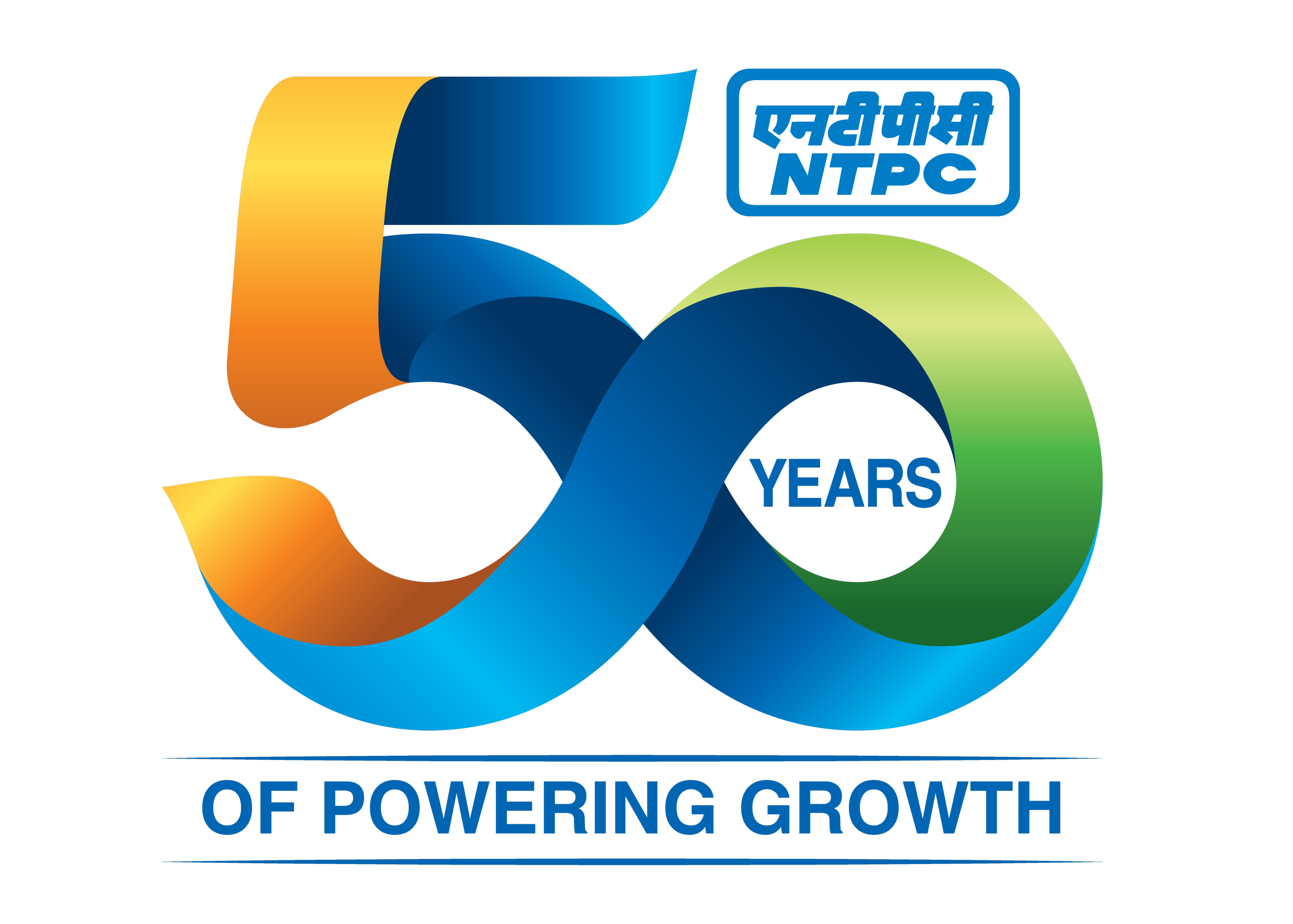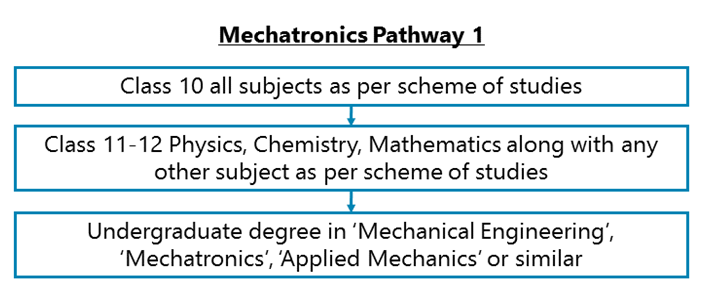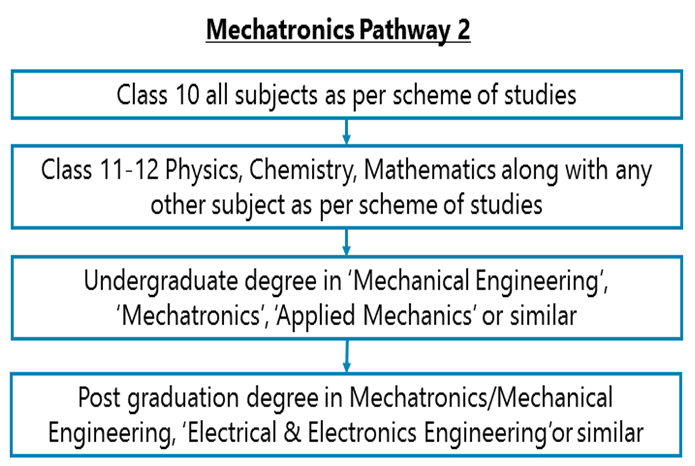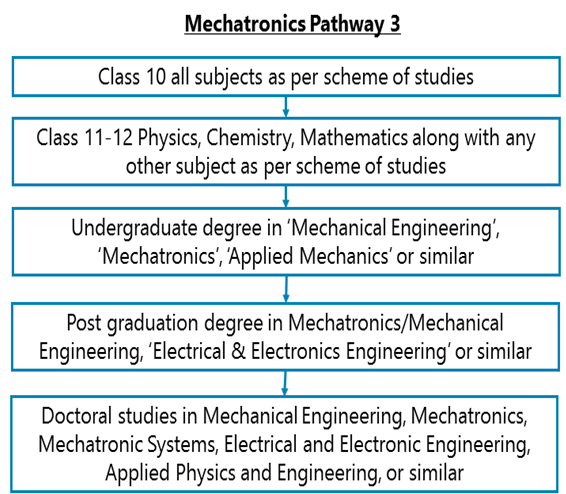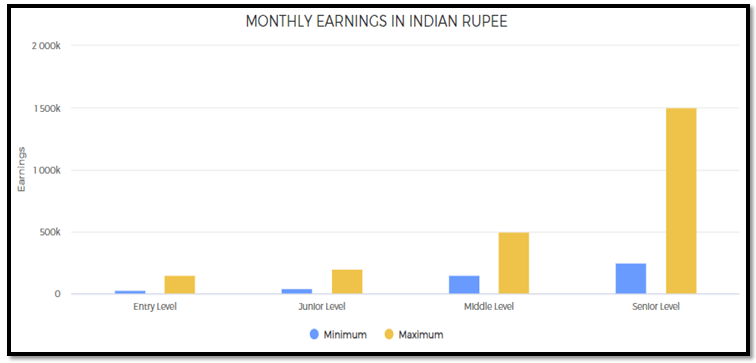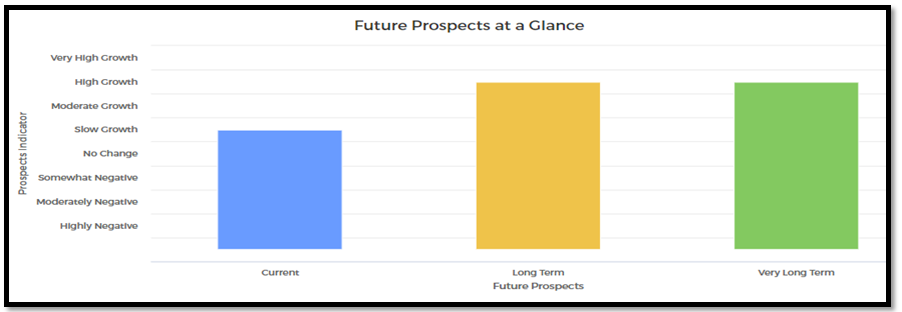Mechatronics Engineer
Entry Level Qualification
12
Career Fields
Engineering & Technology
For Specially Abled








Career Entrance Exam
About Career
PARTICULARS | DESCRIPTION |
Name | Mechatronics Engineer |
Purpose | Build Smart Machines |
Career Field | Engineering & Technology |
Required Entrance Exam | GATE |
Average Salary | 300000 - 1200000 Rs. Per Year |
Companies For You | TATA Group, Thermax, Larsen & Toubro & Many More |
Who is Eligible | Graduate |
As a Mechatronics Engineer, you will be researching, developing, designing, manufacturing, and testing automated machines or machine components or mechanical systems using principles of Mechanics, Mechanical Engineering, Electronics and Computer Sciences. For example, have you heard of car wipers which start automatically when rain starts falling? How does it work? Windshields of such cars have sensors which trigger a computer/electronic processor. The processor switches on the wiper movement. In normal cars, the driver must start the wiper manually. So, the automated wiper is a Mechatronic System designed by a Mechatronics Engineer.
Check out a few examples
Have you ever walked into a Mall where the door opens as soon as you stepped in front of it? How does it work? Here also, there is an infra-red sensor which falls on your body and triggers an electronic processor which in turn switches on the mechanical process of opening the door.
Have you heard of robotic surgical machines which can perform medical operations on human bodies? Complex mechatronic systems are behind these.
Then say for example, an ‘escalator’, or moving stairs, that so many of us are even scared to ride. Some escalators are always moving and some others wait for us to stand on it or walk towards it. Then it starts going up or down. How does that happen? Mechatronics Engineering is the answer.
Have you ever been inside a house/ office where there is Wi-Fi-enabled automatic climate control system, a thermostat? Or inside such a car or bus? How does the system operate? Mechatronics, of course. There’s a temperature sensor which triggers an electronic processor. There is an in-built logic in the processor. The logic is – if the temperature is, say, 40 degree Celsius, then control the air-conditioner to 25 degree.
So, what will be your work be like?
Let us discuss a few points regarding what your work will be like as a Mechatronics Engineer. You will have to generate a new concept of how an electromechanical instrument/system can be made and then draft its design to demonstrate to others how it works. However, this kind of a job is not easy to get.
You will usually be involved in improving existing designs to create the next generations of them. Designs can be created by using some popular software like CAD and Solid Works. Then you will have to build and launch a physically working model of your design (a prototype). Thereafter, you will have to participate in testing your prototype and write down documents to clearly and precisely explain how your machine works and for what purposes it can be used apart from other technical and legal details.
You may also be involved in publishing this paper or submit it for a patent grant if your concept isnew in the industry. Patents will protect you from anybody who tries to copy your design.There are various other types of roles that you can have as a Mechatronics Engineer too. Following sections will give you an idea.
Functional Fields of Work
As a Mechatronics Engineer, you will be involved in any one of the following broad functional domains and will assume responsibilities accordingly:
1. Functional Research and Design
This is laboratory based work that involves inventing new designs and working models of mechatronic systems. Sometimes you may have to work on existing models to improve its capacities or make them better (to create next generation of existing products!).
2. Process Development and Prototype (Model) Launch
This is factory/plant based work. After a mechatronic product is newly invented in a laboratory, itmust be pushed to manufacturing. This processfirst involves launching of a prototype which is a working model of the ‘lab product’. This prototype launch processmust be continuously supervised.Thereafter, the prototype is approved for manufacturing. Anymachine/product is manufactured in parts (Part A, B, C and so on) and then assembled at different levels such as Level 1 is Part A + Part B then Level 2 Part (A+B) with Part C etc.
3. Production Launch, Product Analysis, Quality Control
This is also factory/field based work. Manufacturing activities for a saleable copy of the prototype are collectively referred to as production launch. A manufactured assembled product must be analyzed by Quality Engineers (trained experts in electromechanical systems) who evaluate every aspect of the engineering design to see whether all parts function properly. If not, they suggest corrective action or solutions to amend quality issues by consulting all cross-functional work teams like lab teams, or manufacturing teams etc. Sometimes statistical methods are also used to diagnose and correct quality defects.
4. Field Verification and Services
Field verification involves visiting client locations to coordinate different projects or test installed products. Service Engineers may perform 24/7 remote or on-site support at customer facilities after sales.
5. Education
Educators, Trainers and Design Instructorsare involved in teaching/demonstrating to a class. You may be a Lecturer/Professorin an academic institution, or you may be a Design Instruction Engineer involved in undergraduate laboratory course experiments teaching undergraduate students how to use laboratory facilities. Design Instructors are also involved in coordinating with in-house teaching faculty to improve laboratory standards or course curriculum.
Key Roles and Responsibilities
As a Mechatronic Engineer depending on your functional field of work, you will be engaged with one or more of the following roles and responsibilities: -
For Functional Research and Design
1. You will be developing new solutions for designing and building completely new products by integrating mechanical/electronic/computer processes, for example, developing vehicles for underwater exploration or mobile machines to detect bombs.
2. You will be using designing software like CAD and Solid Works to draw your concepts.
3. You will be carrying out 3-D modeling to create physical models (called prototypes) of your designs.
4. You will be investigating mechanical failures or unexpected maintenance problems in the physical models.
5. You will be preparing detailed written or verbal presentations, technical reports and compilations based upon research outcomes.
For Process Development and Prototype Launch
1. You will be planning, controlling and overseeing all technical issues during the prototype launch process of a product as part of the process development team.
2. You will be suggesting solutions after evaluating the technical issues by consulting other teams like manufacturing or laboratory teams.
3. You will be following an Engineering Change Procedure to implement the suggestedsolutions.Generally, most companies have specific policies in place for these technical changes.
4. You will also have to prepare documentation/paperwork as well as engineering calculations associated with thechanges after they have been implemented.
For Production Launch, Product Analysis and Quality Control
1. You will be actively participating in production launch and oversee the process of manufacturing. Manufacturing activities are collectively referred to as ‘production launch’.
2. You will be responsible for performing visual, mechanical and electrical inspections at subassembly and final assembly levels using engineering drawings/specifications. All electrical as well as mechanical parts of a product must be manufactured individually and then attached together at different levels. All those levels must be inspected by you and your team.
3. You will have to record all your inspection/testresults.
4. You will be involved in interpretation of test results and implementation of necessary modifications.
5. You will be conducting internal audits regularly, leading quality related meetings and coordinating/facilitating training of employees when required.
For Field Verification & Services
1. You will have to make visits to client locations and vendor offices or their manufacturing plants where you will perform inspection of installed products as part offield verification of engineering designs.
2. You will be expected to manage and interpret on-site customer requirements and expectations as part of the technical services team.
3. You will be responsible for installation, diagnosis, and repair of mechanical assemblies at their locations.
4. You will have to read and understand electrical, mechanical schematics to perform necessary installation and repair work using standard test instruments, hand tools, or computer software.
5. You will have to provide timely, accurate, and detailed service visit reports typically within a day of job completion.
6. You will also conduct technical demonstrations and practical training of installed products as part of Services team at customer sites.
For Education
1. You will be involved in teaching/demonstrating to a class of students or a team of research scholars pursuing this stream of study.
2. You will typically be engaged in supervising or outlining research projects for doctoral or post-doctoral scholars working in your team.
3. You will demonstrate techniques or handling of apparatuses to your students inside a laboratory and counsel / guide students in performance of laboratory course experiments.
4. You will participate in seminars, science congresses, conferences across the world.
5. You will be involved in conducting regular research regarding new technologies, experimental techniques, instruments and laboratory supplies that can improve research standards as well as operating procedures and outcomes.
Career Entry Pathway
Class 10 all subjects as per scheme of studies – Class 11-12 Physics, Chemistry, Mathematics along with any other subject as per scheme of studies – Undergraduate degree in ‘Mechanical Engineering’, ‘Mechatronics’ or similar – work for at least 4 years in respective field
After completing Class 11-12 Physics, Chemistry, Mathematics along with any other subject as per scheme of studies, you can go for a B. Sc or BS or B Sci (Bachelor of Science)/ B. Tech (Bachelor of Technology) / BE or B Eng (Bachelor of Engineering) / MPhys / Integrated tertiary level courses (courses offering undergraduate study + training) or similar Bachelor degree courses in ‘Mechanical Engineering’, ‘Mechatronics’, ‘Applied Mechanics’or any of the subjects like ‘Communications, Control, and Signal Processing’, ‘Microsystems, Materials, and Devices’, ‘Power Systems’, ‘Applied Physics and Engineering’, ‘Control Systems Engineering’ or similar. MPhysistypically a4-year undergraduate course for Physical Sciences, open to international students offered by various universities abroad especially in EU and UK. There are levels to it like A level or AS level which have different course structures and entry requirements. Then you need to work for at least 4 years in your respective field to gain work experience as an engineer, drafter, technician, or mechanic in a manufacturing environment and develop strong mechanical aptitude.
Class 10 all subjects as per scheme of studies – Class 11-12 Physics, Chemistry, Mathematics along with any other subject as per scheme of studies – Undergraduate degree in ‘Mechanical Engineering’, ‘Mechatronics’, ‘Applied Mechanics’ or similar - Post graduation degree in Mechatronics/Mechanical Engineering, ‘Electrical & Electronics Engineering’or similar
After completing Class 11-12 Physics, Chemistry, Mathematics along with any other subject as per scheme of studies, you can go for your graduation degree and complete it. Then you may go for post-graduation specifically M Sc or MSor M Sci (Master of Science)/ M. Tech (Master of Technology) / ME or MEng (Master of Engineering) degree or similar post-graduation level courses or training courses in Mechatronics, Mechanical Engineering, Electronic and Electrical Engineeringor similar disciplines after graduation. These are all highly interdisciplinary scientific-technological fields that help to develop portable skills applicable to any industry.
Class 10 all subjects as per scheme of studies – Class 11-12 Physics, Chemistry, Mathematics along with any other subject as per scheme of studies – Undergraduate degree in ‘Mechanical Engineering’, ‘Mechatronics’, ‘Applied Mechanics’ or similar - Post graduation degree in Mechatronics/Mechanical Engineering, ‘Electrical & Electronics Engineering’ or similar – Doctoral Studies
After completing Class 11-12 Physics, Chemistry, Mathematics along with any other subject as per scheme of studies, you can go for your graduation degree and complete it. Then you may go for post-graduation specifically M Sc or MSor M Sci (Master of Science)/ M. Tech (Master of Technology) / ME or MEng (Master of Engineering) degree or similar post-graduation level courses or training courses in Mechatronics, Mechanical Engineering, Electronic and Electrical Engineering or similar disciplines after graduation. These are all highly interdisciplinary scientific-technological fields that help to develop portable skills applicable to any industry. Then you can complete your doctoral studies in Mechanical Engineering, Mechatronics, Electrical and Electronic Engineering, Applied Physics and Engineering, or any relevant domain of interest within your respective fields.
Required Qualification & Competencies
After Class 11-12 Physics, Chemistry, Mathematics along with any other subject as per scheme of studies, you can go for an undergraduate degree including integrated courses (such as Integrated Bachelors and Master degree courses).
You can study any of the following or allied subjects during your graduate / undergraduate / doctoral degree:
1. Advance Mechanics (Instruments)
2. Advanced Mechanical Engineering Systems
3. Automobile Engineering
4. Automotive Electronics
5. Automotive Technologies
6. Biomechanics
7. Biomechanics and Biosensors
8. Computational Mechanics
9. Computer Aided Design and Manufacturing
10. Computer/Human Interaction
11. Control Systems Engineering
12. Design Engineering (Aircraft & Spacecraft)
13. Digital Signal Processing
14. Electrical and Computer Engineering
15. Electrical and Electronics Engineering
16. Electrical Engineering
17. Electromechanical Engineering
18. Engineering Mechanics
19. Engineering Physics
20. Industrial and Production Engineering
21. Industrial Automation
22. Integrated System Design
23. Machine Design
24. Mechanical and Aerospace Engineering
25. Mechanical and Industrial Engineering
26. Mechanical Engineering
27. Mechanics
28. Mechatronic Systems
29. Mechatronics Engineering
30. Mechatronics System Engineering
31. Neural Engineering System Design
32. Product Design (Engineering)
33. Real Time Embedded Programming
34. Sensor Signals and Information Processing
35. Space Engineering
36. Vehicle Dynamics & Control
MINIMUM EDUCATION REQUIRED | MAXIMUM EDUCATION REQUIRED |
Under Graduate | Doctoral |
COMPETENCIES REQUIRED
1. You should have interests for Investigative Occupations. Investigative occupations involve working with ideas and quite a lot of thinking, often abstract or conceptual thinking. These involve learning about facts and figures; involve use of data analysis, assessment of situations, decision making and problem solving.
2. You should have interests for Realistic Occupations. Realistic occupations involve more practical and hands-on activities than paperwork or office work. Realistic occupations often involve physical activities for getting things done using various tools and equipment.
3. You should have interests for Enterprising Occupations. You should have interests for Enterprising Occupations. Enterprising occupations involve taking initiatives, initiating actions, and planning to achieve goals, often business goals. These involve gathering resources and leading people to get things done. These require decision making, risk taking and action orientation.
4. You may need knowledge of Physical Science - Knowledge of physical principles, laws, their interrelationships, and applications to understand fluid, material, earth, ocean, atmosphere, and space dynamics, as well as mechanical, electrical, atomic and sub- atomic structures, properties and processes.
5. You should have knowledge of Mechanical Engineering & Technology - Knowledge of Mechanical Engineering & Technologies which include design, development, testing, manufacturing, installation, operations, repair and maintenance of different machinery, devices, equipment and tools.
6. You may need knowledge of Electrical and Electronics - Knowledge of circuit boards, processors, chips, electronic system design, electronic equipment, electrical equipment and appliances, electrical power generation, etc.
7. You should have knowledge ofComputers–for using computers for various technical and academic purposes.
8. You must be familiar with severalgraphical simulation tools(software) such as Solid Works, CAD, LabView, Simulink/MATLAB, Matrix-x, ACSL, SimPack, Hypersignal, VisSimetc. to create a model and then validate it against real-world measurements.
9. You should have Critical Thinking skills- Skills in the analysis of complex situations, using logic and reasoning to understand the situations and take appropriate actions or make interpretations and inferences.
10. You should have Reading Comprehension Skills - Skills in understanding written sentences and paragraphs in work related documents.
11. You should have Judgment and Decision Making Skills - considering pros and cons of various decision alternatives; considering costs and benefits; taking appropriate and suitable decisions.
12. You should have Problem Solving Skills - Skills in analysis and understanding of problems, evaluating various options to solve the problems and using the best option to solve the problems.
13. You should have Oral Comprehension Ability - listen to and understand information and ideas presented through spoken words and sentences.
14. You should have Oral Expression Ability - communicate information and ideas in speaking so others will understand.
15. You should have Deductive Reasoning Ability - apply general rules and common logic to specific problems to produce answers that are logical and make sense. For example, understanding the reasons behind an event or a situation using general rules and common logic.
16. You should have Problem Sensitivity - The ability to tell when something is wrong or is likely to go wrong. It does not involve solving the problem, only recognizing there is a problem.
17. You should have Inductive Reasoning Ability - The ability to combine pieces of information from various sources, concepts, and theories to form general rules or conclusions. For example, analysing various events or situations to come out with a set of rules or conclusions.
18. You should have Near Vision - The ability to see details at close range (within a few feet of the observer).
19. You should have PerceptualSpeed - The ability to quickly and accurately compare similarities and differences among sets of letters, numbers, objects, pictures, or patterns. The things to be compared may be presented at the same time or one after the other. This ability also includes comparing a presented object with a remembered object.
20. You should have Arm-Hand Steadiness - The ability to keep your hand and arm steady while moving your arm or while holding your arm and hand in one position.
21. You are always or mostly careful about your actions and behaviour.
22. You are always or mostly disciplined in your action and behaviour.
23. You are always calm or generally remain calm in most situations.
24. You can always act independently or could do so in most situations.
25. You always prefer to experience newthings and have new experiences, or you mostly do.
Career - Job Opportunities & Profiles
You can find work in potential areas like in industries and research institutions dealing with mechatronics, smart manufacturing, IoT, bioengineering, or service providers or in electronics and electrical devices manufacturing companies, optometric device manufacturing companies, power/energy industry, healthcare research-based companies, etc. as:
1. Graduate Engineer Trainee
2. Mechatronics Engineer (Trainee)
3. Assistant Engineer – Mechatronics
4. Assistant Engineer – Mechatronics Systems
5. MR&D Engineer (Entry Level)
6. Entry Level- Associate Engineer Manufacturing
7. Associate Engineer, Component Product Engineering
8. Graduate Project Engineer - Automation | System Integration
9. Development Engineer
10. Mechanical Engineer: Monitoring & Mechatronics
11. Quality Engineer (Trainee / Assistant / Associate level)
12. Qualification Engineer
13. 1-D Simulation and Controls Engineer
14. Equipment Engineer
15. Engineer - Technical Solutions - Testing Equipment
16. Technical Support Engineer
Some of the companies which recruit Mechatronics Engineers are: TATA Group, Thermax, Larsen & Toubro, The Godrej Group, Ashok Leyland, Kirloskar, General Motors, ThyssenKrupp, Mahindra & Mahindra, etc.
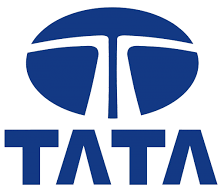

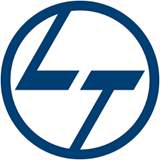

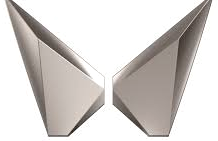
Global
1. Yaskawa Electric Corporation
2. StaubliFaverges SCA
3. Mechatronics Inc.
4. Houston Mechatronics, Inc.
5. Micromechatronics, Inc.
6. Hanwha Group
7. ABB Corporate Research
8. Brose North America
9. ARM
10. British Columbia Institute of Technology
11. Bosch Rexroth
12. Technisys
13. Hennepin Technical College
14. Amtek
15. KUKA College
16. Novatech Robo
17. Siemens
SPECIALISATION TRACKS IN THIS CAREER
1. Mechatronics Engineer (Space Engineering)
This includes the technology and machinery utilized in aerospace solutions and space missions. These are mostly unmanned and autonomous or remotely controlled machines. Think of thin-walled aircraft engines, satellite/rocket launchers, missiles, super-heavy cargo planes, communication instruments in spacecraft, satellite propulsion and equipment, large telescopes and high-energy laser equipment, etc.
2. Mechatronics Engineer (Computer/Human Interfacing)
Mechatronics Engineers may also specialize in communication between a human user and a computer system through various types of input/output devices and supporting software. This interaction can range from an ON/OFF switch to a fully animated, multiscreen display. Nowadays, even cars and airplanes are becoming more and more computer controlled. Direct controls like accelerator pedal for ‘speed’ and brake pedal for ‘deceleration’ are disappearing, meaning there will be no direct physical link between the driver and the control surfaces. The most recent development is ‘ultra-high bandwidth brain-machine interfaces’ (a neural lace inside a robot) first proposed by engineer and businessman Elon Musk (CEO of Tesla). This means that robots are being designed to use a ‘connectome’ (electronic model of a human brain).
3. Mechatronics Engineer (Bionics Engineering)
This segment includes Mechatronic Engineers who design systems such as the Da Vinci surgical robot (to help doctors during surgeries) and bionic prostheses (mechanical arms/legs attached to a human body), as well as robotic exoskeletons (robotic prostheses that can be worn or taken off like a garment) for people with physical limitations. An example here will be the ‘i-Limb hand’ or prosthetic arm for patients with lost arms. These mechanical arms are trained to interact with the brains of patients with a lost arm and can follow human instructions when attached to the body. One more example could be high-definition (HD) personalized microsurgical cameras which enable physicians to even edit their surgical microscopy video presentations after the surgery. These are used for dental, eye, anatomical, neurosurgeries, etc.
4. Mechatronics Engineer (Micro and Nano Electromechanical Systems)
This is one of the most interesting sub-fields. This involves the design and manufacture of tiny electromechanical devices with dimensions in the range of 1 millimeter to 1 micrometer or smaller. As examples of applications, you can consider airbag systems in automobiles, inkjet printer heads, etc.
5. Mechatronics Engineer (IoT Technology)
Internet of Things (IoT) is all about interconnection of machines and devices through sensors, network, communication and specific software without any necessary human-to-human or human-to-computer interaction. For an example, your smartphone can switch a ceiling fan on or off while you are traveling with it in your pocket which means you can set a certain time at which this connection will get activated and the fan will go on/off automatically when it receives this signal from the smartphone.
6. Mechatronics Engineer (Smart Manufacturing)
Smart Manufacturing is a new technology that involves controlling the entire manufacturing process in an industrial plant without human intervention. This involves many aspects such as using computer-integrated systems to monitor supply chains (how many products are supplied, which type of products are supplied, and how fast are they supplied). Then say, for example, using advanced robotics or remote sensing to control the machines used in a factory which means fewer human workers are required lowering the cost in terms of salaries. Another aspect could be business data storage: use of cloud computing has made storing of huge volumes of business data very easy. One more could be, the development of 3-D printing has made production processes far easier. Did you know ‘jewellery’ such as finger rings can be printed these days? Wireless connectivity and robotics have eliminated workplace hazards through less human supervision and the possibility of human errors is also reduced.
CAREER GROWTH
You may grow though the following or similar roles depending on your functional field of work.
1. Functional Research and Design:
Senior Product Development Engineer, Lead Mechatronics Project Engineer, Principal Method Development Scientist, Senior Manager, Advanced Manufacturing, Head of Technical/R&D, Plant Manager, Director - Product Development and Engineering
2. Production and Quality Control:
Senior Quality Systems Validation Engineer, Lead Quality Engineer, Manager – Sustaining Assets & Services, Service Delivery Manager, Senior Product Development Manager, Director, Quality Control
3. Education:
Industrial Fellow, Associate Lecturer, Lecturer (Level B), Lecturer (Level C), Senior Lecturer/Associate Professor, Emeritus Professor, Visiting Senior Research Fellow, Honorary Senior Research Fellow, Director of Department.
Salary Offered
India
1. At the entry level jobs, after your Bachelor’s degree depending upon the institution where you are graduating from, you may expect to get about Rs. 25,000 – 1,00,000 or even more a month.
2. After 4-5 years of work experience, you may expect to earn around Rs. 40,000 to Rs. 2,00,000 a month or more depending on your job location and roles.
3. At the entry level jobs, after your Master’s degree depending upon the institution where you are graduating from, you may expect to get about Rs. 40,000 – 1,50,000 or even more a month. In junior level jobs (after 4-5 years of experience), you can make about Rs. 60,000 – 2,50,000 or more per month.
4. In mid-level engineering jobs in India (after having 8-10 years of experience), you can expect to earn about Rs. 1,50,000 – 5,00,000 or even more a month.
5. In senior-level engineering jobs in India (after having 15 years of experience), you can expect to earn about Rs. 1,50,000 – 15,00,000 or even more a month.
Global (US)
1. Remember that, if you are not a US citizen, getting a job in USA after a bachelor’s degree will be a rare case. However, after your Graduate (Master’s or Ph.D.), you may look forward to if you do well in your course. The chances of getting a job after graduate courses increases with the reputation of the university from where you graduate. However, if you from a premier institute like IIT, you may get a campus placement in USA. But even that is few and far between.
2. At the entry level jobs, after your Bachelor’s degree depending upon the institution where you are graduating from and the engineering discipline, you may expect to get about USD 3,000 – 6,000 or even more a month.
3. After 4-5 years of work experience, you may expect to earn around USD 4,500 to USD 8,000 a month or more depending on your job location and roles.
4. At the entry level jobs, after your Graduate (after Master’s or Ph.D.) degree depending upon the institution where you are graduating from and the engineering discipline, you may expect to get about USD 4,500 – 7,000 or even more a month. In junior level jobs (after 4
5. 5 years of post-graduation), you can make about USD 5,000 – 8,000 or more per month.
6. In mid-level engineering jobs (after having 8-10 years of experience), you can expect to earn about USD 7,000 – 12,500 or even more a month.
7. In senior-level engineering jobs (after having 15 years of experience), you can expect to earn about USD 10,000 – 18,000 or even more a month. Senior corporate leaders get much more than this; their total remuneration including performance bonuses could be as high as half a million or even a few million dollars a year.
Middle Eastern, North African and South East Asian countries
1. Remember that unless you have 5-10 years of good work experience, it is not feasible to get a job. If you get, that’s a rare case or you may get placed in these countries only from your campus interview.
2. After having 5-10 years of experience, in these countries, you may get about Rs. 1,50,000 – 4,50,000 or more a month along with other benefits like tax free salaries, travel expenses, etc. Mid-level salaries range from Rs. 3,00,000 – 7,50,000 or more a month. Senior level salaries range from 5,00,000 – 30,00,000 or more a month. All salaries are mentioned when exchanged for Indian currencies. Salaries could also be lesser in some countries like Egypt and Malaysia.
MONTHLY EARNINGS IN INDIAN RUPEE
1. Entry level: 0 - 2 years of work experience
2. Junior Level: From 1 to 12 years of work experience
3. Mid Level: From 5 to 20+ years of work experience
4. Senior Level: From 10 to 25+ years of work experience (there could be exceptions in some high-end technical, financial, engineering, creative, management, sports, and other careers; also in the near future, people will reach these levels much faster in many careers and in some careers, these levels will have no meaning as those careers will be completely tech skill driven such as even now, there is almost no level in a Cyber Security Expert’s job).
Work Activities
1. Drawing, drafting, laying out and specifying objects, equipment, devices, tools, and systems - Creating and developing designs, drawings, layouts and specifications about how to construct, manufacture, assemble, build, use, and maintain various equipment, devices, tools and systems.
2. Inspecting equipment, systems, structures, and materials - Inspecting equipment, systems, structures, and materials to ascertain quality, performance, defects, causes of errors, etc.
3. Fabricating, assembling, and constructing equipment, devices and products - Fabricating, assembling, constructing or otherwise manufacturing products, equipment, devices and tools; testing and calibrating products, equipment, devices, tools and systems.
4. Operating machines, equipment, devices, systems and processes - Using various methods and techniques to operate machines, equipment, devices, systems and processes in industrial and other settings.
5. Analysing and interpreting data and information - Analysis of data and information to find facts, trends, reasons behind situations, etc.; interpretation of data to aid in decision making.
6. Processing information - Compiling, tabulating, calculating, auditing, verifying or otherwise dealing with information processing including data entry, transcription, recording, storing and maintaining databases.
7. Creative thinking - Developing new ideas, concepts, innovative solutions to problems, newer ways of getting things done, designing products and services, creating work of art and craft, etc.
8. Strategic planning - Developing visions and goals, developing strategies and action plans for achieving visions and goals.
9. Assessing and evaluating quality - Assessing and evaluating quality of materials, systems, processes, products, services, etc.
10. Handling and moving objects and materials - Using hands or otherwise use physical strength to handle and move objects and materials; maneuver, install, lift, place, manipulate, etc.
11. Monitoring processes, systems and performance - Observing and recording information on various criteria to monitor mechanical, electronics, electrical and other processes and systems; monitoring progress of projects and tasks.
12. Making decisions and solving problems - Analysis of data and information; evaluation of alternative decisions and results of decisions; taking the right decisions and solving problems.
13. Organising, planning and prioritizing tasks - Planning and organising tasks in order to achieve work goals; prioritizing tasks to achieve goals and making the best use of the time available.
14. Updating and using relevant knowledge - Keeping updated with the latest knowledge relevant to your fields of work and use of the relevant knowledge in getting things done.
15. Getting Information and learning - Observing, hearing, reading, using computers, or otherwise obtaining information and learning from it.
16. Using computers for work - Using computers for day-to-day office work; using computer software for various applications in day-to-day professional work; entering data and process information; for writing.
17. Communicating with co-workers and others - Communicating with people in writing, verbally or otherwise inside your workplace and various other people who have professional relationships with your place of work including vendors, government officials, etc. or with people at large.
18. Working in a team - Working in a team of people; developing team; maintaining professional relationships among team members.
Future Prospects
You can expect a very bright future in this field as the industry growth prospects are encouraging. The Agricultural Robots and Mechatronics market was valued at USD 3.4 billion in 2018 and is expected to register a growth rate of 24.2% compounded annually, during 2019-2024. In 2018, North America accounted for the largest share of around 42% of this market. Big industrial indoor farms are making use of ‘Aquaponics’ that includes high-tech plumbing and filtration systems. The global Automated Guided Vehicle Market was worth USD 3.89 billion in 2018, and is estimated to reach USD 10 billion by 2024, recording a growth rate of 17.01% compounded annually during 2019-2024.
Most factories have been trying to eliminate human intervention, for limiting the scope for errors and increase productivity in the domain. Surgical robotics contributed to the highest market share of the global Healthcare Robotics market.
FUTURE PROSPECTS AT A GLANCE

